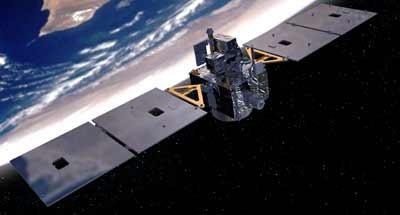MightySat
The MightySat series of military satellites were launched to undertake technology objectives. These satellites did not receive a designation in the S-for-Satellite series.
| Name | Intl. Designation | Launch | Re-entry | Notes |
|---|---|---|---|---|
| MightySat-1 | 1998-069C | 15-Dec-1998 | 21-Nov-1999 | |
| MightySat 2-1 | 2000-042A | 19-Jul-2000 | 12-Nov-2002 |
Launch dates of the MightySat series
MightySat-1
 |
| Photo: Author's collection |
| MightySat-1 (1998-069C) |
Launched on 15 December 1998, MightySat-1 was a 60 kg satellite to test advanced technologies for autonomous micro satellites. The experiments were:
- the Advanced Solar Cell Experiment (ASCE) which tested the performance of a new type of solar cell
- the Microsystem and Packaging for Low Power Electronics (MAPLE) demonstration of advanced electronics and electronics packaging systems
- the Shape-Memory Actuated Release Device (SMARD) to demonstrate a new class of low shock release devices
- the Micro-Particle Impact Detector (MPID) to measure the impact of orbital debris
Also known as P97-2, the satellite was spring released from a Hitchiker canister on STS-88 Space Shuttle flight.
MightySat 2-1
 |
| Image: Author's collection |
| MightySat 2-1 (2000-042A) |
Also known as P99-1 and Sindri, MightySat 2-1 was a 120 kg technology satellite to test advanced space systems technologies. It was launched on 19 July 2000. The instruments included:
- the Solar Array Concentrator (SAC) which focuses more light on each solar cell, thereby increasing the solar energy available
- the Naval Research Laboratory Space Ground Link System Transponder (NSX), an experimental light weight communications system
- the Shape Memory Thermal Tailoring Experiment (SMATTE), an experimental thermal control system
- the Quad C40 Processor, to test the impact of space radiation on new forms of microelectronics
- the Fourier Transform Hyperspectral Imager (FTHSI) to record the full spectra without time delays
In addition the spacebus itself demonstrated new technology in flexibility, modularity and thermal control whilst on 7 September 2001 it released the Picasat-7 and -8 nanosatellites.
Back to Directory of U.S. Military Rockets and Missiles, Appendix 3
Last Updated: 11 April 2005